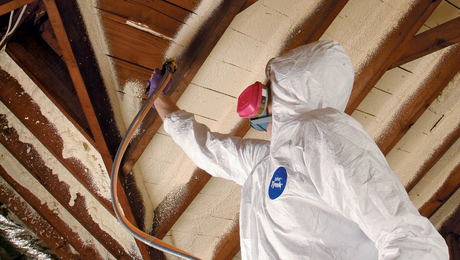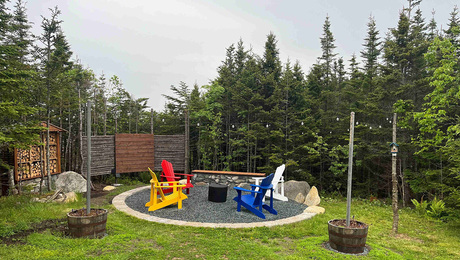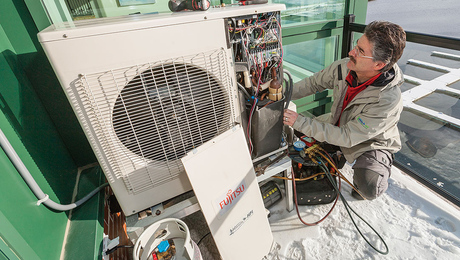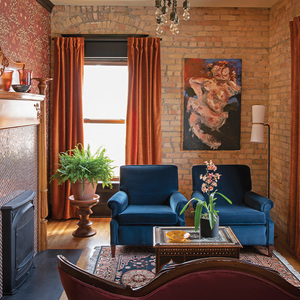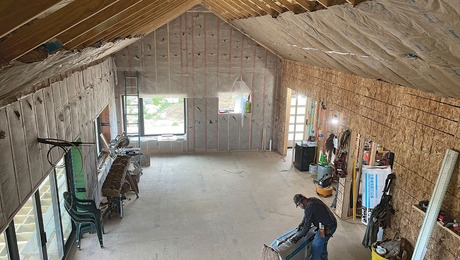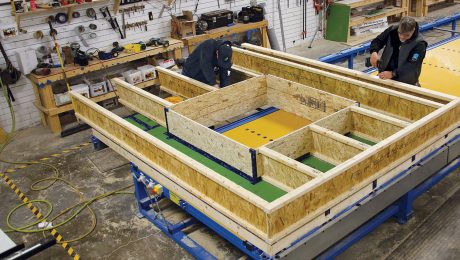Podcast 469: Blue Goo on Framing, Painting Open Soffits, and Whole-House Dehumidifiers
Andrew, Ian, and Patrick hear from listeners about electric water heaters and the future of home building before taking questions about blue stuff on framing, painting open soffits, and whole-house dehumidification in wet climates.
Follow the Fine Homebuilding Podcast on your favorite app. Subscribe now and don’t miss an episode:
 |
Help us make better episodes and enter for a chance to win an FHB Podcast T-shirt:
www.finehomebuilding.com/podcastsurvey
Jon and Nick share their experience replacing electric-resistance water heaters with heat-pump models. Home inspector Paul weighs in on California termites. Ron explains SCIP panels for new construction. Jim asks about that blue goo on new framing. Will wants to know how to detail and paint his open soffits and exposed rafter tails. Ryan inquires about lowering his home’s humidity with a whole-house dehumidifier. Jonathan shares his experience trying to start a tool-lending library in Silver Spring, Md.
Editor Updates:
- Patrick’s visit to Brian’s new build
- Ian’s dog run and plantings
- Jeff’s wedding officiating
- Andrew’s home network and tablesaw cove molding
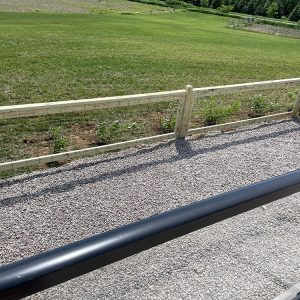 |
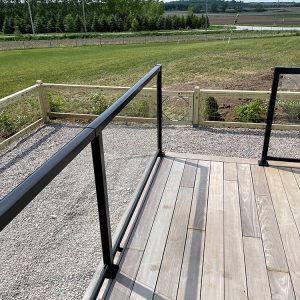 |
 |
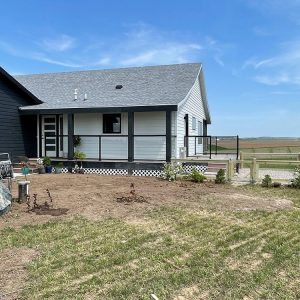 |
 |
Listener Feedback 1:
Jon from Centreville, MD writes: Podcast crew, In response to your request for water heating feedback in episode 461… I want to report that I am very happy with the Rheem 80-gallon heat pump water heater that I installed three years ago for my family of 7. In “heat pump only” mode, it keeps up fine with our demand better than 95% of the time. It also provides some nice dehumidification to my generally humid basement. I smile to myself every time I walk by it and see the yellow Energy Guide sticker that says the estimated yearly energy cost is $161—which is far below “cost range of similar models” ($220-$732). Unfortunately, I cannot say precisely what it saves me in electrical usage, but I’d like to think it is significant. Up front, it cost about a third more than a conventional electrical resistance heater, but at the time my utility offered a $500 rebate on the purchase. I would highly recommend a heat pump water heater to anyone who is interested. I’ll save my building science questions for another day. As always thanks for all your wit and wisdom.
P.S. Thanks for your ideas for air sealing my concrete block basement wall several weeks ago. I have not yet tackled that project but I intend to.
Related Links:
Listener Feedback 2:
Paul writes: Patrick- It was great to hear a question from Anu, a fellow East Bay resident, on episode 461. Most of the termites in this area are the subterranean type, and in my 15+ years of doing home inspections, I’ve never seen mud tubes on the exterior of a building. Their preferred path is on the inside of the foundation, so I wouldn’t be particularly worried about termites getting into the exterior foam. Borate treatments are good for interior applications, like a mudsill, but since borate is water soluble, it won’t last long in an exterior application. If Anu is still concerned about termites, I’d suggest a structural pest operator to do a perimeter treatment.
Feel free to share my contact information with Anu, especially if he has more questions about home hardening, and thanks again for the great podcast!
P.S. Hopefully you remember me from my appearance on ProTalk Podcast 383. You didn’t remember my name in a subsequent podcast, so I guess I won’t be running for office on name recognition anytime soon! ? It comes with the territory when you have a hard to pronounce last name…
Listener Feedback 3:
Ron writes: Hi FHB Crew! I enjoyed your conversation in episode 443 about the future of home building. You welcomed thoughts from listeners, so here we go. I believe the future of affordable, high-performance home building is SCIP panels. With this system, the walls and roof are constructed with a panel containing an EPS foam center and thick wire mesh on both sides. Welded diagonals through the foam create a strong/ lightweight truss system. Two inches of concrete are sprayed on the inside and outside walls, creating an I-beam type structure. The system has the following advantages:
• Extremely resilient to wildfires, hurricanes, earthquakes and flooding
• No wood, so rot, mold and water damage problems are eliminated
• Moisture barriers, siding and sheet rock are eliminated with the use of concrete
• Insulation and air tightness are inherent in the system
• The thermal mass is insulated on the inside of the building
• Very quiet interior
• EPS foam thicknesses from 4 to 8 inches to cover different climates
• ICC code approval
• Lightweight panels are easy to transport over large distances
• No large equipment needed for construction
I’m in the planning phases for a 1200 SF wildfire rebuild house. Not counting labor, the panels cost around $30,000. Concrete for the walls and roof is around $9,000. After the foundation, it should take three people under four weeks to stand the walls and roof, cut openings for windows and doors, and spray and smooth all concrete. We all know that any change is difficult for home building. Do you think this system will be used more in the future?
Here are a few links:
www.rsg3d.com/construction/residential/
www.innstruct.com/stand-and-shoot.html
www.youtube.com/watch?v=xajdicoK8WQ&t=85s — The insulation and concrete thickness isn’t code compliant, but shows how simple the construction can be. 30 day house.
www.youtube.com/watch?v=0DlY3Uyg9QI
Related Links:
- SCIPs Please?
- Fire-Ready and Nontoxic
- A Modern California Home Wrapped in Rockwool Insulation for Energy Efficiency and Fire Resistance
Listener Feedback 4:
Nick writes: Patrick, I wanted to take a moment to share my water replacement experience with you and the team. My home had an electric water heater when we moved in and last March it started leaking from the base. Not a surprise as we have hard well water and there wasn’t a filtering system setup before we took ownership. When looking for a replacement unit I made sure to do as much research as I could looking at the current electric and heat pump units.
A new electric water heater, according to the energy guide label, stated a cost of over $400 a year for energy. The same as the unit I would be replacing. A heat pump water heater stated a cost of around $100 a year. I am always skeptical of these labels but at a difference of $300 a year, I was very intrigued. The cost difference between the electric and heat pump at the time of purchase was about $1100, no small amount, but after doing a cost analysis I realized it would only take me a little over three and a half years to break even and then from that point on I would be saving $300 a year. Even if the energy savings were only half the stated amount I would still break even before the warranty was out.
I went with the heat pump unit and a year later I am glad I did. I have a family of five, three kids between 7-11, so the water heater gets put through its paces. After that first year the energy usage was almost dead on. The unit has a panel that connects to my phone for monitoring and stats so I was able to verify that my usage was within 61kWh of the energy label. That is, 61kWh LESS than estimated usage. I would do it again in a heartbeat.
Some additional notes. I was very intrigued by the Marathon water heaters due to the amount of insulation but the energy usage cost was the same as a standard electric unit and with my family it wasn’t like the water would be in storage for long. The unit was also installed in my unfinished basement where I also have a dehumidifier so that was a plus. I initially was concerned about how the unit would do in the winter as the basement is only passively heated by a wood furnace but it didn’t have any issues working in a cooler environment.
Best of luck to you on your water heater adventure.
Nick
Related Links:
Question 1: What is this blue stuff on the bottom of the framing?

Jim writes: Saw this in the Wall Street Journal and can’t figure out what’s with the blue stuff. Is it a preservative for rot in case of flooding? Termite proofing? It looks like it was put on after the framing was up so what protects the bottom end of the studs? If it is for flooding, why build there?
Question 2: Do I need to vent my soffits and if so, what is the best way to do so?
Will in Fort Worth, Texas writes: Big fan of the show! I wrote in not too long ago and your response was so very helpful that I figured I would do it again! I live in a 1959 ranch style down in Fort Worth, Texas. The house was originally built w/o any soffit so the rafters have been exposed since 1959. There have been many attempts to paint them over the years, but none seem to be very good attempts. I imagine that is because it is so labor intensive/time consuming to paint 3 sides of a rafter and all of the decking that is exposed between each rafter? Any who, I have decided to “shoot from the hip” and just go for a solution that seemed alright to me.
Last summer, I started adding my own take on a “soffit job.”
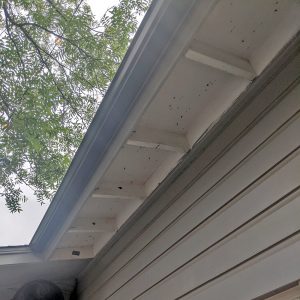 |
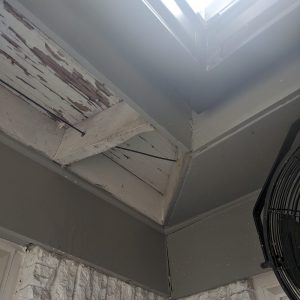 |
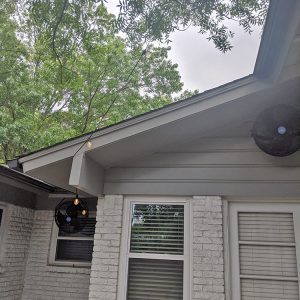 |
I bought a table saw and a compound miter saw and started nailing up quarter-inch plywood. I painted it w/some Behr paint and tried to be very good about the caulking. It has done pretty well over the last year!
Before I admit to my first embarrassing mistake, I will say I only got about 10-12 feet done near my back porch. My mistake: I didn’t vent at all. Well, I assume this is a mistake? Since the house was built in 1959 w/o the intentions of ever having soffit the attic has been pretty well sealed. Here are my series of questions…
- Do I need to vent? If so, how often (~2300 sq ft house) and with what product? I have seen little round vents on Amazon in ~40 packs. This seems like quite a lot, so I am just not sure how many feet need to be between each vent?
- Does it matter that things are pretty much sealed between each rafter, since the house was never designed to have soffit?
- Is the quarter-inch plywood the correct approach?
I really appreciate y’all’s help and look forward to your insightful response!
Much obliged,
Will in Texas
Related Links:
Question 3: Is a whole-house dehumidifier the solution to our energy and comfort problems
Ryan in Houston, Texas writes: Good evening, Our home just turned 6 years old and we are located in zone 2 (Houston, TX aka year-round humidity). As energy costs are constantly increasing, we are considering installing a whole-home dehumidifier to save on our bills, lengthen the lifespan of our air conditioner, and limit the opportunity for mold/mildew to thrive.
We have a 1.5 story home, with a dedicated 1.5-ton 14 Seer air conditioner for the upstairs 400 sq ft playroom, and another 3.5-ton 14 seer unit for the downstairs 2800 sq ft (3 bedrooms). We considered spray foaming the attic at one point, but the furnace needs an air source and we had concerns about a backdraft. So, our plan is to straighten out the slack and kinked air conditioning ducts and add a whole-home dehumidifier such as the Aprilaire 100. Is a whole house dehumidifier the solution to our energy and comfort problems or are we missing a more obvious step?
PS I browsed some beestat.io data. In the summertime our indoor humidity is in the high 50s/low 60s and the annual average is 48.5. I was unable to download the entire year history but did get a last 7-day snapshot.
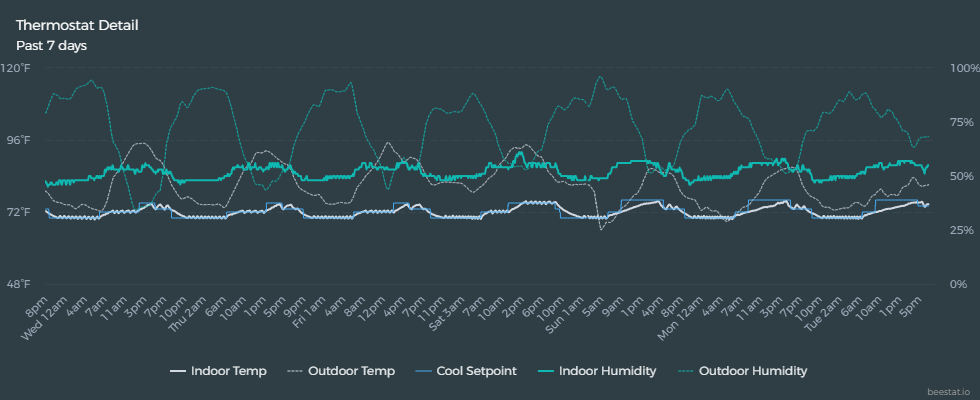
Thank you for your insight!
Will in Texas
Related Links:
Question 4: How do I get someone to insure a tool lending library?
Jonathan in Silver Spring, Maryland writes: Greetings. A few years ago, my local civic association* tried to start a tool library where members could borrow power tools for free. Unlike a big box store, it would be hyper local and free and maybe even come with some help. The thinking was that many homeowners don’t want to invest the money in a tool they may only need once or twice. We polled the membership and came up with a list of “most wanted” tools. It included some basic tools and heavier duty things like a hammer drill, chain saw, up to a stump grinder.
I was already planning which pesky stump to remove first when the issue of insurance came up. No company was willing to insure the civic association board for liability. We were told that waivers don’t stop people from suing. It may stop them from winning. Insurance companies still have to spend money to defend these cases. We tried going through an insurance broker. It didn’t go so well. He was aghast we would consider loaning dangerous tools to strangers. The whole idea quickly fell apart. Meanwhile the stumps remain.
*Our civic association is not an HOA. Membership is optional and we can’t tell anybody what their mailboxes should look like. It’s best that way.
P.S. Tool Tribe doesn’t have a presence here last I checked.
Related Links:
END NOTES:
Problems with HGTV home NYTimes
Check out one of our Project Guides: Siding & Exterior Trim!
Check out our FHB Houses:
Visit the Taunton Store • Magazine Index • Online Archive • Our First Issues • All Access
Help us make better episodes and enter for a chance to win an FHB Podcast T-shirt: www.finehomebuilding.com/podcastsurvey

If you have any questions you would like us to dig into for a future show, shoot an email our way: [email protected].
If we use your question we’ll send you a FHB Podcast sticker!
FHB Podcast T-shirts!
Represent your favorite podcast! Available in several styles and colors. Made from 100% cotton. Find the Podcast t-shirt and more cool products in the Fine Homebuilding Store.

Fine Homebuilding podcast listeners can now get 20% off anything in the Taunton store, including Pretty Good House.
Use the discount code FHBPODCAST to take advantage of this special offer.
We hope you will take advantage of a great offer for our podcast listeners: A special 20% off the discounted rate to subscribe to the Fine Homebuilding print magazine. That link goes to finehomebuilding.com/podoffer.
The show is driven by our listeners, so please subscribe and rate us on iTunes or Google Play, and if you have any questions you would like us to dig into for a future show, shoot an email our way: [email protected]. Also, be sure to follow Fine Homebuilding on Instagram, and “like” us on Facebook. Note that you can watch the show above, or on YouTube at the Fine Homebuilding YouTube Channel.
The Fine Homebuilding Podcast embodies Fine Homebuilding magazine’s commitment to the preservation of craftsmanship and the advancement of home performance in residential construction. The show is an informal but vigorous conversation about the techniques and principles that allow listeners to master their design and building challenges.
Other related links
-
- All FHB podcast show notes: FineHomebuilding.com/podcast.
- #KeepCraftAlive T-shirts and hats support scholarships for building trades students. So order some gear at KeepCraftAlive.org.
- The direct link to the online store is here.






